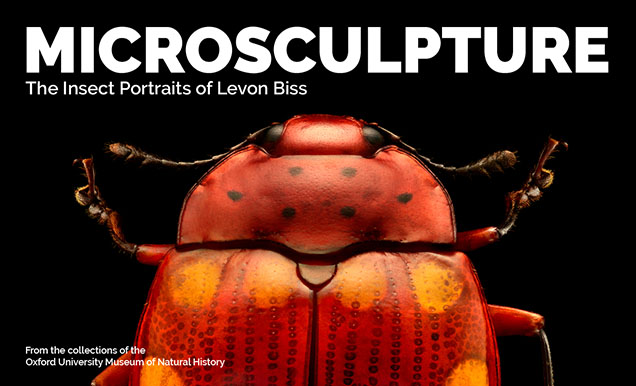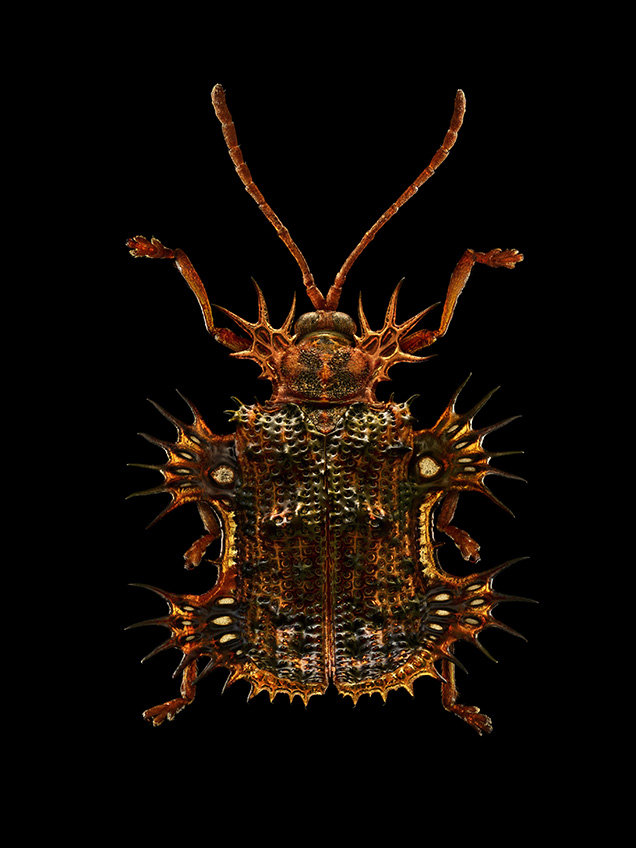Microsculpture:
The Insect Portraits of Levon Biss
November 19, 2022–April 23, 2023


Microsculpture: The Insect Portraits of Levon Biss is a groundbreaking project that presents insect specimens from the Oxford University Museum of Natural History like never before. British photographer Levon Biss’ images reveal an unexpected and often breathtaking beauty that brings to life the many intricate adaptations of an insect’s form — what entomologists call their microsculpture.
Displayed as large-scale photographic prints up to 9 feet high, the Microsculpture project reveals the hidden structure and beauty of insects. Each beautifully lit image was created from around 8,000 individual photographs taken under strobe lights, capturing the microscopic forms of insects in striking, high-resolution detail. Examine extremely fine pigmented scales, velvet-like surface textures, saw-sharp mandibles, swirling patterns and some of the most vibrant, iridescent colors seen in nature.
All exhibits are included with the purchase of a general admission ticket.

Microscope Exploration With Academy Entomologists
Fridays, 10 a.m. to noon
Free with admission
Join Academy entomologists (scientists who study insects) as they bring their work to life by exploring specimens from our world-renowned collection of over 4 million insects.
Each week, get a high-tech view of a different invertebrate, learn about some of the Academy’s most beautiful species and speak to our enthusiastic entomologists about their research. Find out everything you ever wanted to know about how to collect, study and preserve scientific specimens.
How does examining the finer details of an invertebrate, through photography and microscopy, enable us to uncover an invertebrate’s true nature?
A sample of Biss' photographs on display:

Orchid Cuckoo Bee, Brazil
Credit: © Levon Biss
The orchid cuckoo bee is the most spectacular of all bees in terms of size, color and microsculpture. We usually think of bees as benign, helpful creatures, but Exaerete is a cuckoo bee. Instead of collecting pollen and constructing their own nests, female cuckoo bees enter the nests of other bees and lay their eggs in the host’s brood cells. This particular specimen has grown to a large size by consuming the pollen diligently collected by its host.

Splendid-necked Dung Beetle, Madagascar
Credit: © Levon Biss
Arguably the most attractively marked dung beetle in the world, it is thought that after the extinction of all the large animals in Madagascar, this beetle survived by switching from feeding on dung to feeding on dead animals

Tortoise Beetle, China
Credit: © Levon Biss
The wonderfully complex shape of the tortoise beetle is a composite of bumps, pits, wrinkles and rows of spines. Light passing through the specimen further reveals areas where the wing cases are paper-thin. The function of the spines is unclear but can be assumed to be a physical defense or to help camouflage the insect on its host plant.